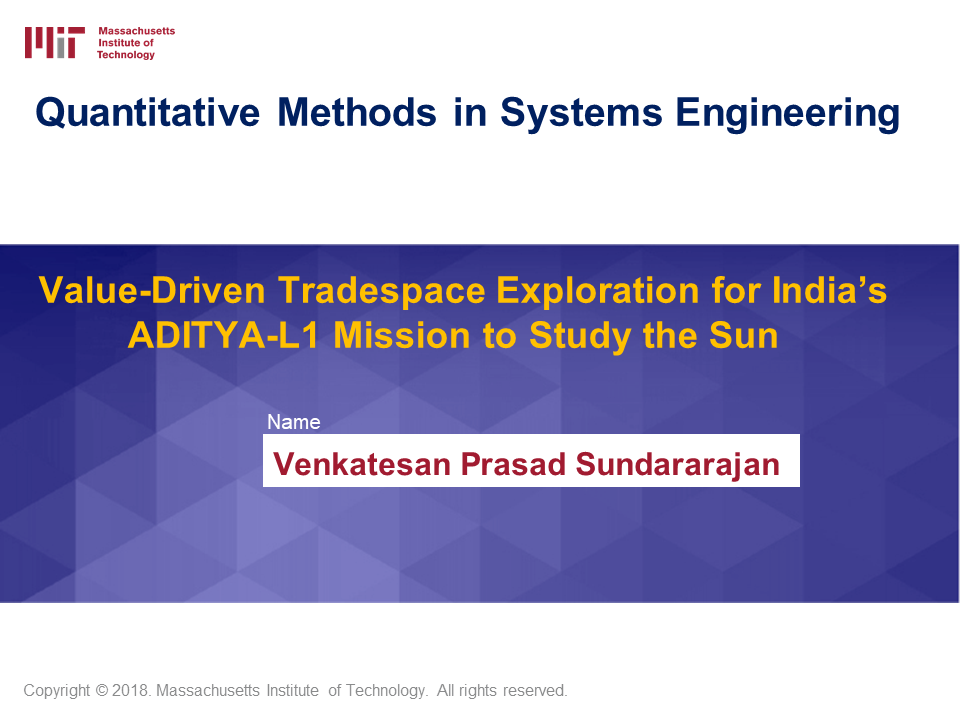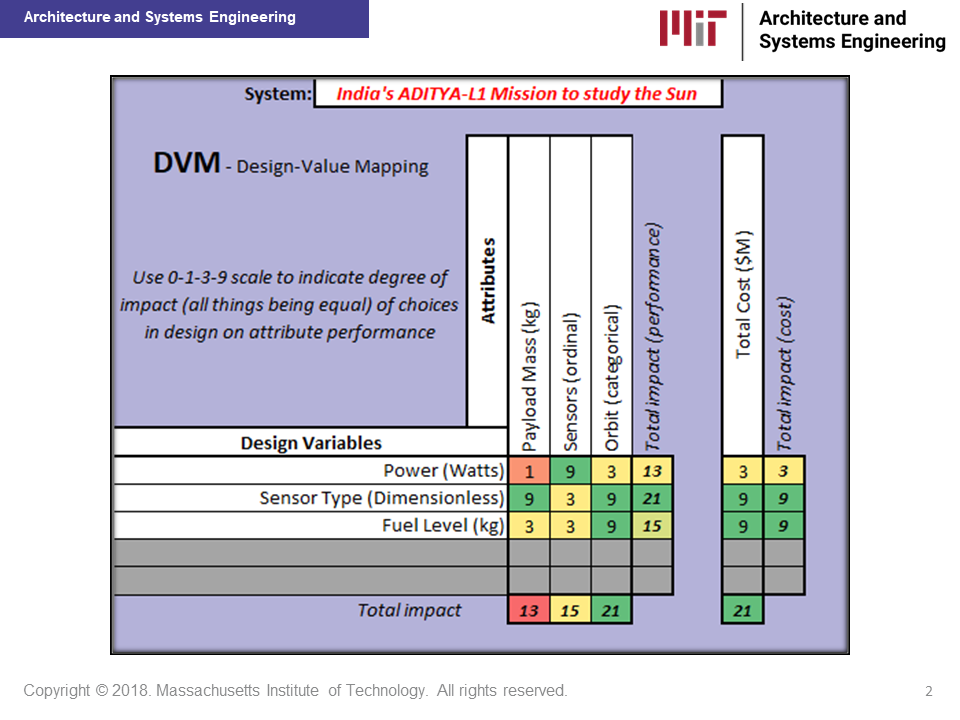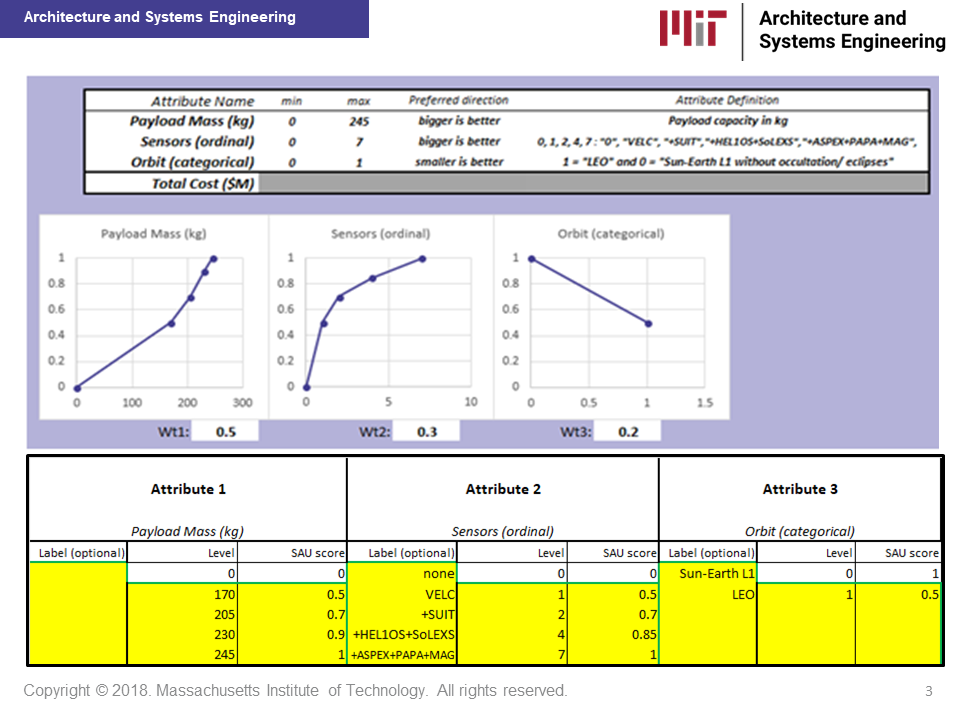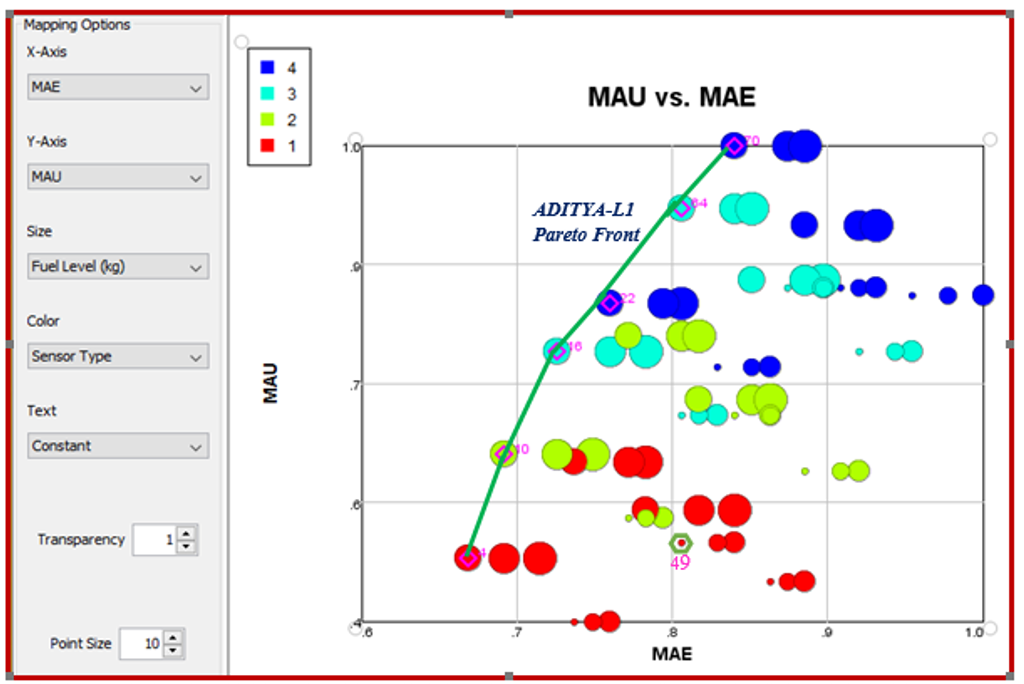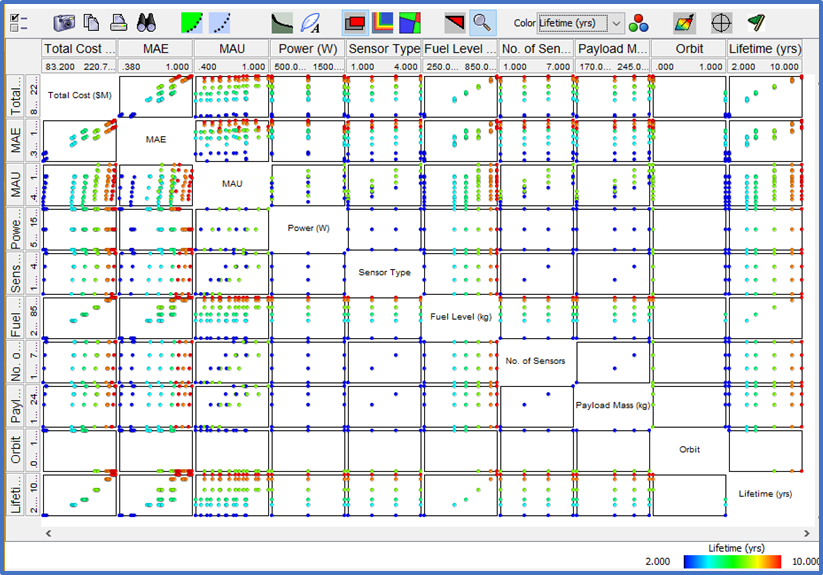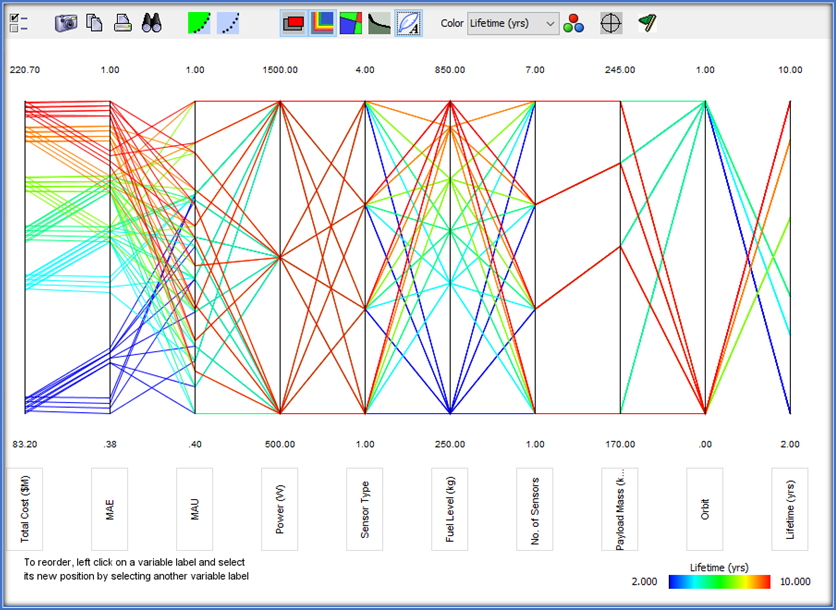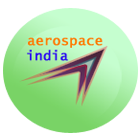Tradespace Exploration (TSE) is a model based decision analysis tool that explores a design space by enumerating and evaluating many potential designs, including the Pareto efficient front that represents the set of non-dominated designs across the considered objectives (often, cost and benefit value metrics). The Pareto front are determined algorithmically and involves determining solutions that are equal to or better than other solutions across their objectives.
Design Value Mapping (DVM) method provides a value-centric way to assess the design concepts’ ability to fulfill stakeholder needs, allowing decision makers to focus on the key utility drivers and to identify value expectations that are potentially difficult to drive. The relationships between each design variable and attribute pair can be represented using a DVM matrix. A non-linear scale of 0,1,3 and 9 is used to represent either no, weak, medium and strong relationship. The sum of the cells down each column represents whether an attribute is being weakly or strongly driven by the current set of design variables.
Tradespace exploration is useful for evaluating the design of complex engineering system architectures with several independent design variables and associated attributes to obtain multiple dimensions of benefit. TSE is an attractive technique for problems in which there are multiple decision makers or stakeholders with different value propositions or “preferences” defining their utility functions. The visualization of tradespace exploration is an excellent system design and management technique for architects, designers and decision makers for not only selecting the “better” designs but also in understanding the trade-offs, strengths and weaknesses and the sensitivities involved to improve the final design and gain insights on the selected design’s sense of robustness.
ADITYA-L1 MISSION:
Aditya-L1 spacecraft is a dedicated space science mission of ISRO to study the Sun from the halo orbit around the Lagrangian point (L1) of the Sun-Earth system. The orbit around L1 provides continuous solar observations without any eclipse/occultation and is an excellent outpost outside Earth’s magnetic field to make in-situ measurements of incoming charged particles. Aditya-L1 Mission is planned for a launch by a PSLV-XL rocket into an elliptical Earth Parking Orbit of 245 km by 21,000 km in 2021-2022. The onboard satellite propulsion will be utilized to raise the orbit, transfer to the L1 point and maintain the L1 halo orbit with a planned transfer period of around 100 days.
Initially, Aditya mission was conceived as a 400 kg (IMS – Indian Mini Satellite) class satellite carrying one payload, a solar coronagraph to be placed in an 800 km Low Earth Orbit (LEO) for a nominal mission duration of 2-years. This original Aditya mission architecture is represented in the multi-attribute tradespace exploration (MATE) by design no. 49, with a MAU value of 0.5 and MAE value of 0.83. Based on the recommendations of Advisory Committee for Space Science (ADCOS), ISRO planned the space science mission as ADITYA-L1, the spacecraft to be placed in the Sun-Earth system Lagrangian Point 1 (L1) halo orbit with six additional science payloads on a larger satellite platform.
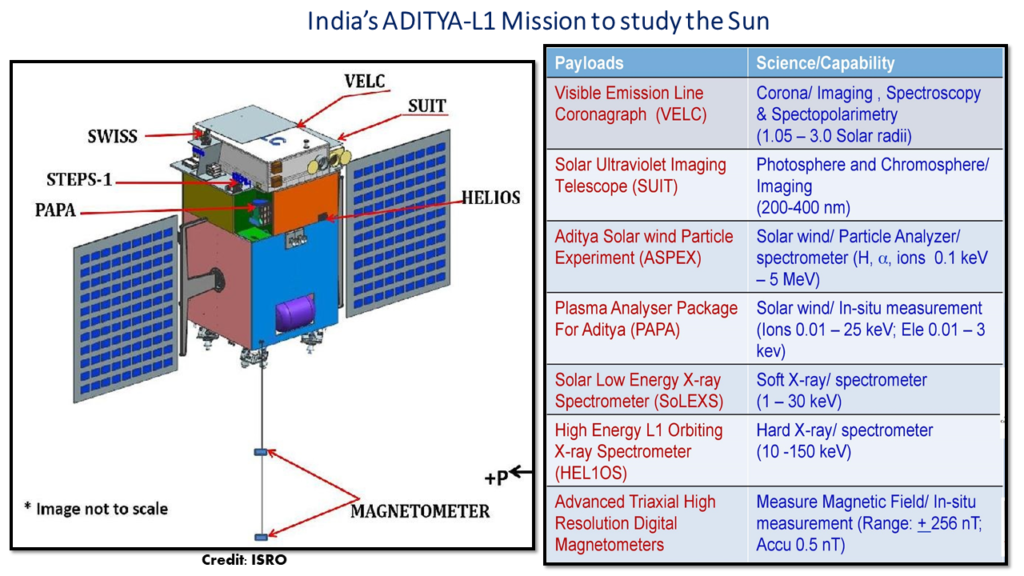
Aditya-L1 is a 1500 kg-class satellite carrying seven payloads. The sensors cover the Sun’s photosphere (ultraviolet (UV) and soft and hard X-rays), chromosphere (UV) and corona (visible and NIR). The main science payloads are the Visible Emission Line Coronagraph (VELC), Solar Ultraviolet Imaging Telescope (SUIT), Solar Low Energy X-ray Spectrometer (SoLEXS), High Energy L1 Orbiting X-ray Spectrometer (HEL1OS), and three in-situ instruments, Magnetometer (MAG), Aditya Solar wind Particle Experiment (ASPEX) and Plasma Analyzer Package for Aditya (PAPA).
The ADITYA-L1 mission tradespace exploration (TSE) Pareto front (non-dominated) architecture designs and all other designs within 10% of the Pareto optimality (Fuzzy Pareto Number [FPN] = 10) in the MAU vs. MAE plot visualization are all based in the L1 halo orbit.
